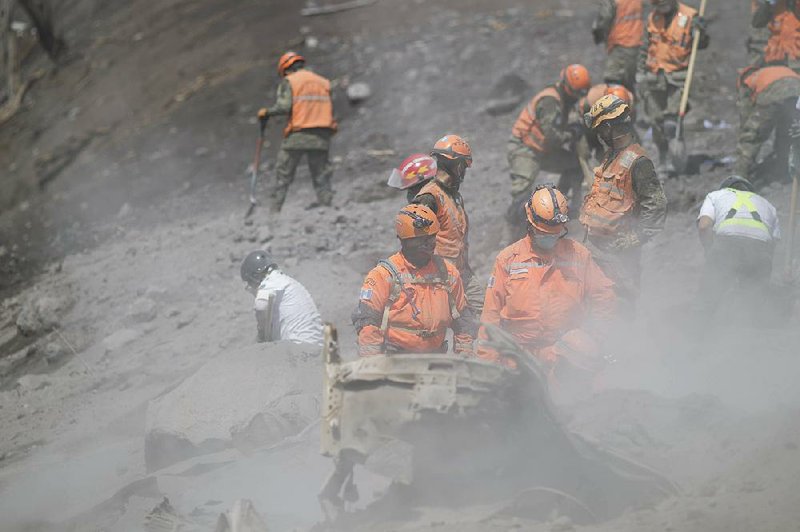EL RODEO, Guatemala -- Emergency crews pulled more bodies Wednesday from what remained of villages devastated by the eruption of Guatemala's Volcano of Fire, but time was quickly running out to find survivors as the confirmed death toll rose to 99.
Workers poked metal rods into the terrain to release smoke, an indication that super-hot temperatures remained below the surface three days after the volcanic explosion that killed at least 99 people. Once a verdant collection of canyons, hillsides and farms, the area was reduced to a moonscape of ash by the avalanche of fast-moving molten rock, mud, and debris.
After a drone survey, police managed to reach a farm where a home had been buried and people were believed to have been trapped inside.
The death toll, increased to 99 on Wednesday, was expected to rise, with almost 200 people missing.
At the wreckage in the village of San Miguel Los Lotes near the base of the volcano, rescue crews were operating again but rain from the previous night had caused the ash to harden.
"We are analyzing the terrain," said David de Leon, spokesman for the disaster agency Conred.
Authorities warned that the rain increased the chance of muddy flows of volcanic material and other debris. A red alert remained in place for the departments of Escuintla, Sacatepequez and Chimaltenango.
Firefighters' spokesman Julio Sanchez said Tuesday that 72 hours after Sunday's eruption there will be little chance of finding anyone alive.
"We don't rule out the possibility of some person alive, but the condition in which the homes are makes that possibility pretty unlikely," Sanchez said, adding that some of the ash was still at temperatures between 750 and 1,300 degrees Fahrenheit.
On Tuesday, frightened people living near the volcano fled with their children and few possessions when authorities warned of fresh flows of super-heated debris, taking no chances after they were given little time to evacuate before Sunday's eruption.
Traffic came to a standstill on choked roads and many without vehicles fled on foot, even from the city of Escuintla, which is located about 10 miles from the volcano and was not under an evacuation order.
President Jimmy Morales traveled to El Rodeo by helicopter Wednesday to survey the destruction.
Authorities suspended search and recovery efforts in the afternoon, citing the dangers posed by rain and new flows of volcanic material and debris.
In past disasters in which authorities determined there was no chance of finding survivors and further efforts to recover bodies would be too difficult, areas have been declared burial sites -- the final resting place of the victims.
Asked about that possibility, the director of Guatemala's disaster agency, Sergio Cabanas, said: "Not until the search efforts are over, and it would be left up to the people."
A Section on 06/07/2018
